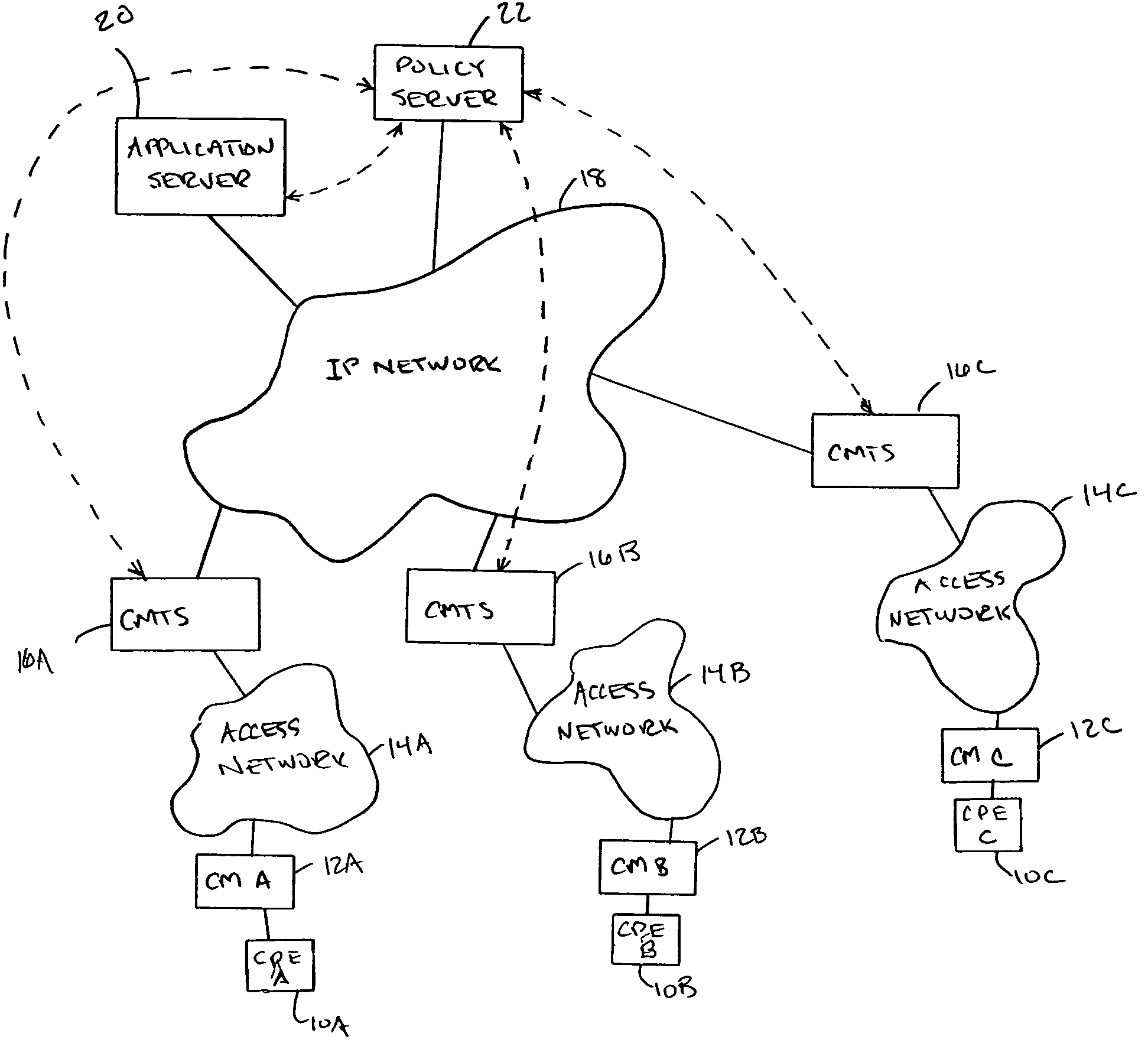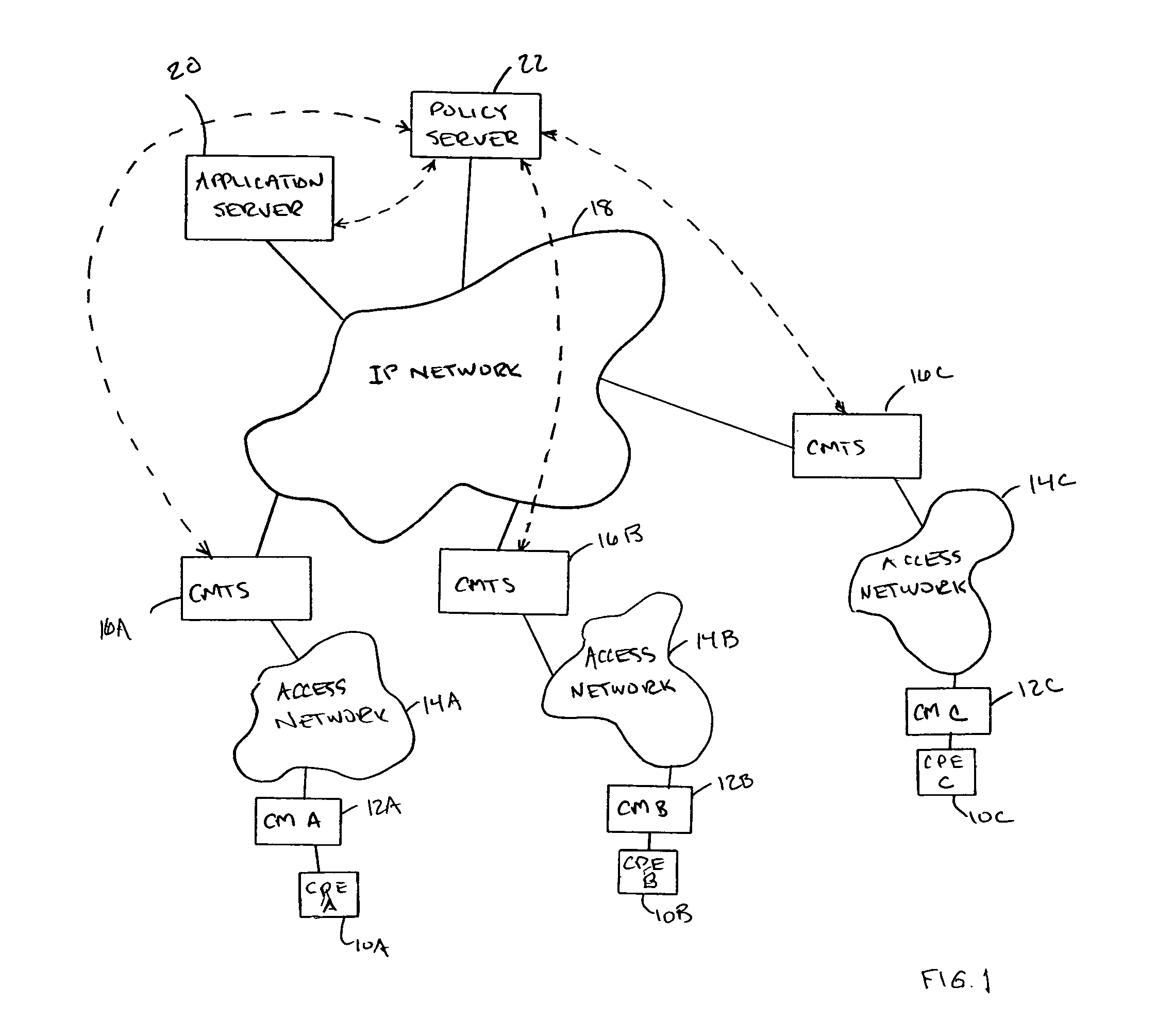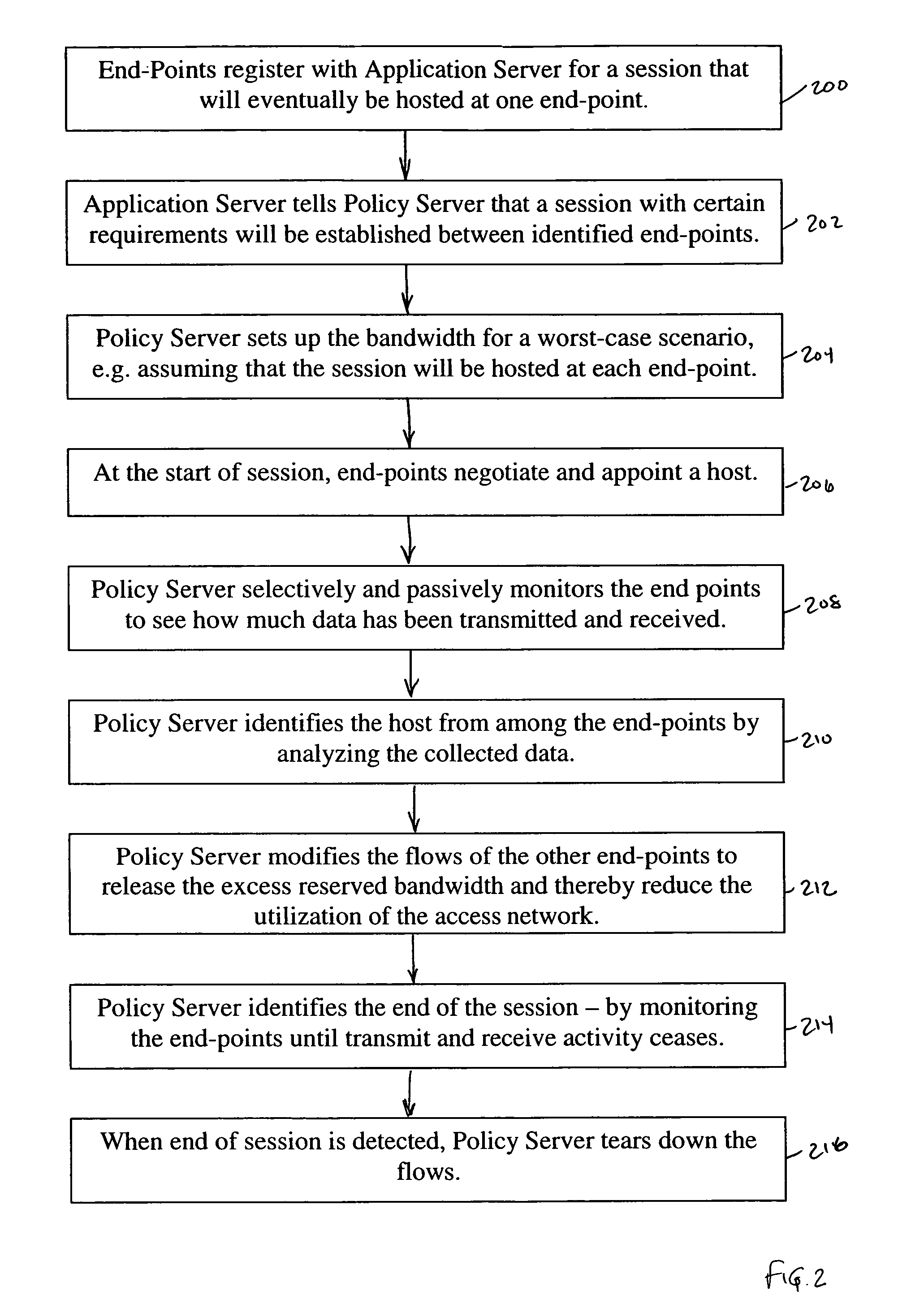Method for dynamic rate adaptation based on selective passive network monitoring
a dynamic rate and passive network technology, applied in the field of policy servers, can solve problems such as application performance suffer
- Summary
- Abstract
- Description
- Claims
- Application Information
AI Technical Summary
Benefits of technology
Problems solved by technology
Method used
Image
Examples
Embodiment Construction
[0009]The described embodiment is a multi-point network in which end-points participate in sessions for which session requirements cannot be determined prior to the beginning of the session. The network includes a policy server that dynamically adapts the allocation of network resources based upon selective passive monitoring of the use of network resources by the end-points that are participating in the session. The described embodiment ensures a more optimal utilization of the network especially in a situation where the session requirements cannot be accurately determined prior to the beginning of the session.
[0010]As shown in FIG. 1, the network of the described embodiment is a cable network that includes Customer Premises Equipment (CPEs) or end-point devices 10A-C, such as personal computers or set top boxes with attached gaming devices, that subscriber's use to access the services available form a remotely located application or registration server 20. Each end-point device is...
PUM
 Login to View More
Login to View More Abstract
Description
Claims
Application Information
 Login to View More
Login to View More - R&D
- Intellectual Property
- Life Sciences
- Materials
- Tech Scout
- Unparalleled Data Quality
- Higher Quality Content
- 60% Fewer Hallucinations
Browse by: Latest US Patents, China's latest patents, Technical Efficacy Thesaurus, Application Domain, Technology Topic, Popular Technical Reports.
© 2025 PatSnap. All rights reserved.Legal|Privacy policy|Modern Slavery Act Transparency Statement|Sitemap|About US| Contact US: help@patsnap.com



